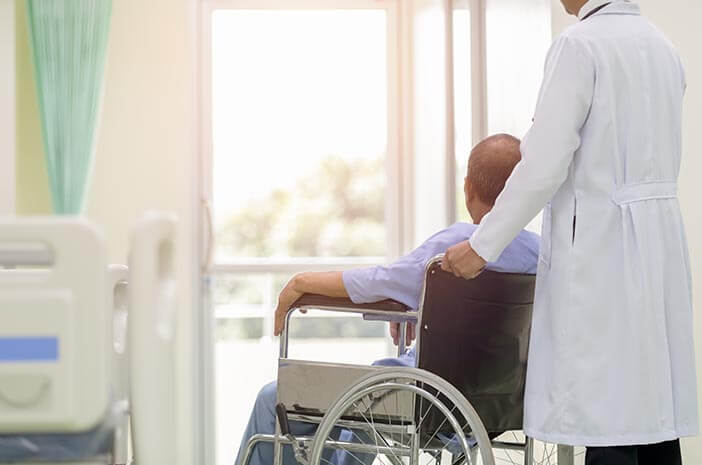Stroke is the third leading cause of death in the world after heart disease and cancer. A stroke causes the leading cause of disability in the productive age. Upper limb hemiparesis is the most common example of post-ischemic disability post-stroke with a percentage of 73%, compared with hemorrhagic, which is only 13%. Hemiparesis after an ischemic stroke occurs not because of musculoskeletal abnormalities but is caused by damage to the central nervous system that controls the neuromusculoskeletal system and standard postural reflex mechanisms. Various attempts were made to increase muscle strength and self-care clients, such as posture reflex exercises, weight-bearing, balance, and coordination. The weakness of the previous intervention is that it does not use media or tools and only focus on weak body parts, not involving whole body parts. It is what causes the duration of rehabilitation—implementing a combination of muscle strength and various exercise exercises using tools or media as active brain stimulation, and self-care has never been done. Muscle strength, hemiparesis, range of motion, and stroke client self-care. It is generally caused by corticospinal pathway lesions, which flow from cortical neurons in the frontal lobe to the motor neurons of the spinal cord and are responsible for the movement of body muscles and limbs.
Mirror therapy provides visual stimulation to the brain (motor nerves of the brain, ie ipsilateral or contralateral for hemiparesis movements) through observing body movements that will tend to be copied like in the mirror by disturbing parts. Mirror therapy is recommended as a simple and inexpensive alternative therapy for treating gross motor function. Another simple method is a cylindrical grip. A cylindrical grip is a functional exercise of the hand by holding a cylindrical object such as a roll of tissue or a glass bottle in the palm to move the fingers gripping correctly. Cylindrical can help develop ways to balance subtle motor paralysis in the fingers.
Both of these interventions each affect the increase in muscle strength. Mirror Therapy can increase muscle strength by activating the sensory and cylindrical grip, which increases the strength of the fine motor muscles in the fingers and widely used in daily activities and self-care of clients. The cylindrical grip itself can be combined in-phase variations and forms Mirror Therapy using cylindrical objects. This study aimed to analyze the effect of a combination of cylindrical grip mirror therapy on muscle strength, range of motion of the upper limbs, and post-stroke client self-care at two hospitals in Banjarmasin.
The research conducted by Faculty of Nursing Universitas Airlangga proves that mirror therapy combined cylindrical grip on muscle strength and range of motion of the upper limbs so that it can be applied to nurses and physiotherapists to carry out complementary therapy as support for pharmacological therapy to increase strength muscles and range of motion of the upper limbs. Post-stroke rehabilitation needs to be done together with the instructor and training schedule to achieve maximum results with established procedures.
Author: Nursalam, Iqlima Dwi Kurnia, Bernadetta Germia Aridamayanti
Link: https://ijicc.net/images/vol_13/Iss_6/13626_Nursalam_2020_E_R.pdf





